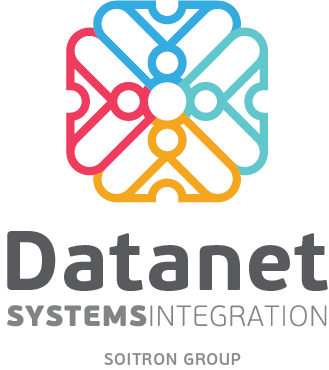
With an estimated IP traffic of 8.6 Zettabytes (ZB) for 2018, almost 2.7 times higher than the traffic recorded in 2013 (according to Cisco Global Cloud Index), Data Centers are entering a phase of major changes. In order to cope with the accelerated increase, generated by the higher and higher performance and availability requirements and by the extended adoption of Cloud services in the enterprise environment, data centers will have to adopt new technologies and solutions which would allow them to reach superior efficiency levels.
Here are, according to the analysts, the ‘hot topics’ in 2016 on the Data Center market:
Software Defined
Once the Software Defined technologies – and especially the SDN (Software Defined Network) – are widely adopted, the data center infrastructures become more and more automated, as the manual configuration and reconfiguration operations are removed. The direct results: drastic decrease in errors, increase in agility levels, flexibility and scalability, decrease in operational costs and, especially, the reaching of a superior availability index. Specialists estimate that during the following period more and more data centers will turn to Software Defined platforms capable of offering unified management tools for hardware and software components and to automatically assign resources according to the demands.
Automation
Automation, a key component of the Software Defined platforms, will become, in the next two years, a de facto standard in Data Centers. The reasons are obvious: on one hand, automation cuts down operational efforts and human errors, and on the other hand, it increases the pro-activity level and the reaction speed in case of incidents which might cause costly downtimes. However, automation adoption will generate important changes for data center administrators, who will have to develop new skills and give up repetitive operations.
Security and Compliance
The accelerated migration to data centers and the wide adoption of Cloud services will generate much stricter security and availability requirements and standards. The effects will be seen in the level of the conformity requirements in certain industries, which will become much more restrictive, a phenomenon which is already visible in the European Union. A corollary of this phenomenon will be the acceleration of the efforts to define standards for the classification of data centers at a European level.
Hyper-convergence
Hyper-convergent systems, which bring together hard and soft components in one equipment and which can be managed unitarily through a software interface, will become more popular in data centers. Hyper-convergence represents a viable answer to the need of simplifying the infrastructure management, which will become more stringent following the increase in the level of heterogeneity and complexity, as well as in the level of infrastructure virtualization.
IoT
The accelerated adoption of the Internet of Things technologies will not spare the data centers either. By adopting intelligent technologies, the Data Center administrators can monitor the status of the critical infrastructure components by using real time analysis systems which integrate temperature and humidity sensors, power consumption, solutions for monitoring network equipments, etc. All these are doing their part for ensuring a high level of availability and for an efficient resource management.
Intelligent DCIM Systems
The adoption of IoT is closely related to the evolution of Data Center Infrastructure Management (DCIM) systems. DCIM systems have evolved in a spectacular manner in the last few years, from simple tools for infrastructure inventory to the status of ‘intelligent’ solutions, by integrating analysis and automation components.
A New Design
The demand of the clients for high-density cabinets will record a visible increase this year, with the migration towards convergent infrastructures. This will lead to an increase in rack consumption – specialists estimate that the passing from 5kW/rack to 8-12 kW/rack will be accelerated during the next 2 or 3 years. This change in the consumption level and in the cooling requirements will, in its turn, cause a reconfiguration of the architecture of data centers and the arrival of ‘multi-zone’ Data Centers, with different power supply and cooling capabilities.
Advanced Metrics
Specialists are saying that the traditional indicator PUE (Power Usage Effectiveness) is no longer sufficient in order to correctly assess the energy efficiency of data centers. There already are several initiatives for defining metrics accepted unanimously at an international level, which would consider other parameters besides the power consumption, like the water reuse level, renewable energies, etc.
The data center industry is going through a continuous transformation process under the pressure of the speed, availability and security requirements, which are higher and higher. The analysts predict that this phenomenon will become more and more visible this year.
For more information please contact us at marketing@datanets.ro.
 Second Cloud Adoption Wave
Second Cloud Adoption Wave
